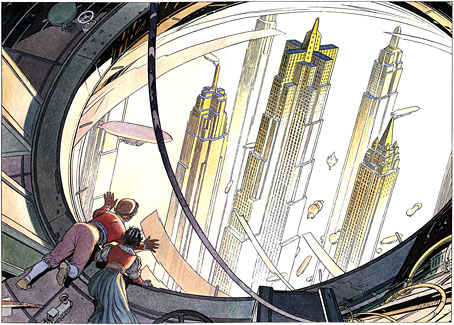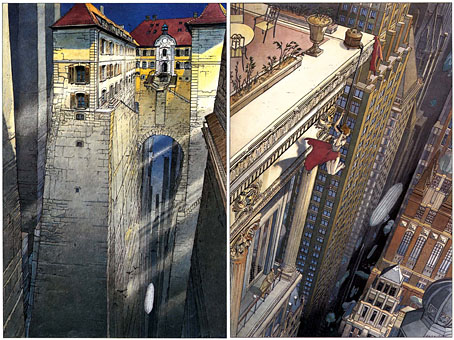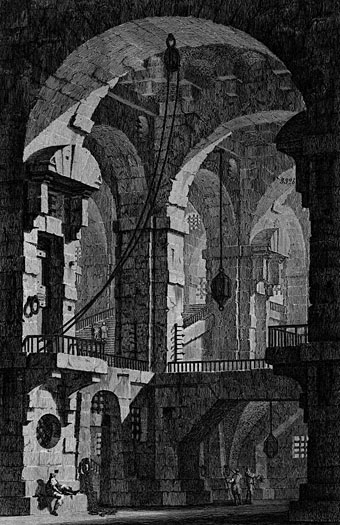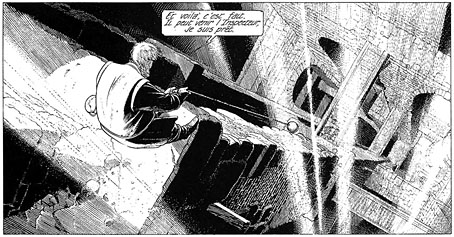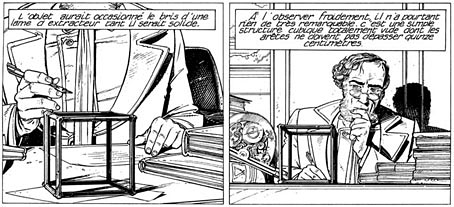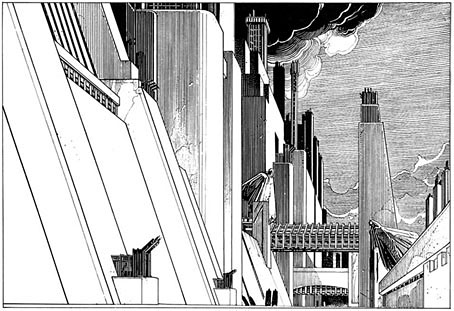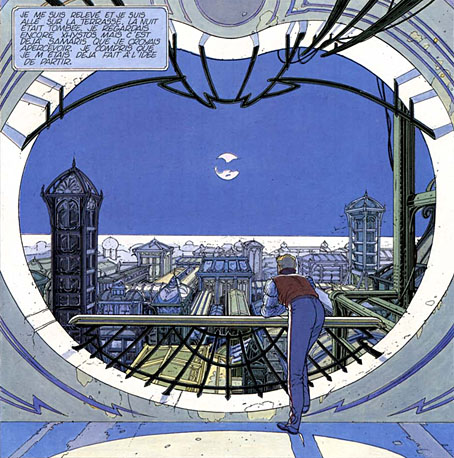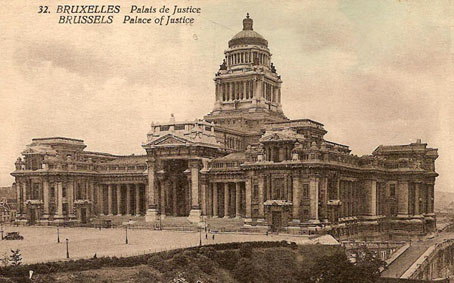
The Palace of Justice, Brussels.
Brüsel (1992) by François Schuiten and Benoît Peeters follows La route d’Armilia as the next major work concerning the Cités Obscures. As with La Tour, this is a longer story where it isn’t immediately apparent that we’re in the Obscure World at all, although Brüsel is clearly an alternate version of our Brussels. The unfinished Palace of the Three Powers in the city centre is modelled on the Palace of Justice in Brussels, and both buildings share architects by the name of Joseph Poelaert.
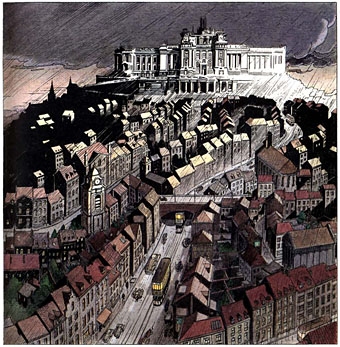
The Palace of the Three Powers, Brüsel.
Brüsel is a “small man” tale of Constant Abeels, a would-be shopkeeper preparing to launch a business selling a new and modern innovation: plastic flowers. Abeels suffers from a persistent cough, and it’s a combination of his health problems and business problems—the water for the shop is disconnected—that causes him to become enmeshed in schemings to radically transform the city, and the resistance to those plans. The tale is also a satire on the overly-optimistic march of progress of the late 19th and early 20th century, with all the problems of trying to impose sudden architectural change on a change-averse community. Inhabitants of Brussels have a long history of sudden architectural change, the huge Palace of Justice being constructed only after residents of the area had been forcibly evicted. In the 1950s and 60s, the flattening of old quarters in order to build New York-style office blocks was so destructive that the French coined the term “Brusselisation” to describe a brutal remodelling of a city against the wishes of its citizens.

